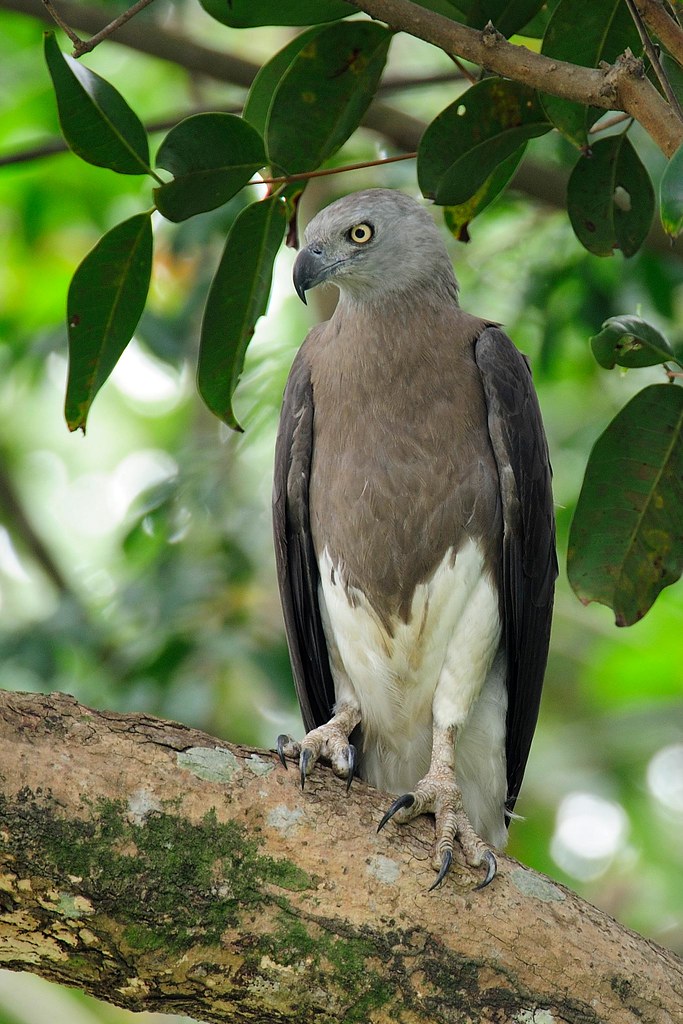A Guest Post by Aaron Barlow from Delineations of Eye.
Are you thinking of hitting the trail for a grand adventure? Want to fill your camera with hundreds of beautiful shots of the great outdoors? I have some tips to keep that adventure eco-friendly and help ensure you have locations to photograph for years to come.

Image by Rick Harrison
Let's start out with something that everyone has heard before but can't be said enough (mostly because it's catchy)
1. Take Photos, Leave Only Footprints
Of course! Simple enough, right? Essentially don't leave with anything you didn't come with.
2. Make a List
Make a list of what you will be taking. Making a list puts those items in your mind and helps you not forget anything you may need. That's the obvious. However, it also helps you remember everything you brought with you! Leaving a lens – God forbid – a filter, or any other equipment behind is not only bad for the bunnies; it's probably expensive and let's not forgot frustrating!
3. Leave It Cleaner
Leave the trail cleaner than you found it. For me, this normally means bringing a spare grocery bag strapped to my pack for callously discarded bottles, cans, and various other refuse. It sometimes takes a bit extra work depending on the gear I have with me, but getting hi-fives from other appreciative photogs and hikers is well worth it.
4. Remember The Snacks
If you're going out on any trail for an extended period of time, it's always a good idea to bring a snack. Just remember snacks have packaging that can end up on the trail. I can't tell you how many times I have seen wrappers blown right out of people's hands. I recommend using reusable Tupperware containers. No wrappers, easy to pack and handle, and you are far less likely to leave it behind.
5. Bottles
You should always take water on the trail. ALWAYS. This tip though is more of an odd one that is just my personal preference. I find it better to take reusable bottles. Why? Well, why pay for a bottle of water when it's FREE from the tap! Not to mention, just like the Tupperware, you're less likely to leave it behind.
6. Man's Best Friend
If you take your best friend… the furry one. OK, if you take your dog with you on trail, keep it leashed and by your side. Dogs left to roam unleashed can cause pretty serious unseen damage to the trail and surrounding eco-system. Not to mention it can be stressful for some to come across a strange unleashed dog. Oh, and please ensure you clean up after your friend. Add doggy bags to your list!
7. Look Out For Hitchhikers
This is probably the number one thing many hikers and outdoor photogs do not think about. It is a sad fact that these days there are many invasive plants in locations ripe for photography. These plants love to hitch a ride on your boots which you may inadvertently transplant someplace else. Always inspect your shoes (including underneath), socks, and other gear before leaving the trail. If you brought a pet with you, and even if you followed tip 6, It's a good idea to inspect them for hitchhikers also.
8. Watch Your Step
Watch your step! That plant or flower you just walked on could have been another photographers dream shot, or at least an inspiration. This is usually achieved by staying on trail. I know, as a photographer you may have the urge to run off with the perfect shot in your mind, just remember to look down!
Many of the locations I go shooting are often environmentally sensitive areas, so even stepping on one plant can have a major impact. In many locations you can also get slapped with a steep fine for going off trail and damaging the landscape.
9. Animal Interactions
Keep your interactions with animals to a minimum, especially the big ones! Photograph them; enjoy their presence and natural beauty, just leave it at that. Wild animals are wild, keep them that way. I suppose it may be tempting to try novel approaches at getting that shot – like the guy who was recently arrested for baiting animals – be smart, don't try that. If one decides you look tastier than the bait, don't say I didn't warn you!
10. No Smoking Please
Don't worry, not going to preach about its health effects. I will say though that smoking on a trail is potentially dangerous when you think of it as a major fire hazard. It's better to wait till you're someplace less susceptible to fire.
11. Keeping Water Clean
This means that you or your best friend should not have any emergencies within 40 yards of a water source. Strange tip right? Well, think of it this way; animals drink that water and depending on the water source, you may eventually as well.
I hope these tips help you when you're out in the wild on a trail, and remember, if you have any tips of your own, please share them in the comments below. We always love learning something new!
Check out more of Aaron Barlow's work at Delineations of Eye.
Post from: Digital Photography School - Photography Tips. Check out our resources on Portrait Photography Tips, Travel Photography Tips and Understanding Digital Cameras.

11 Tips For Eco-friendly Trail Photography



















